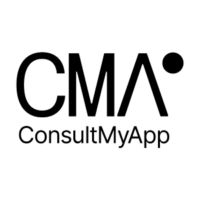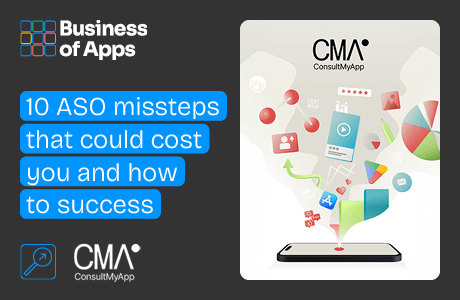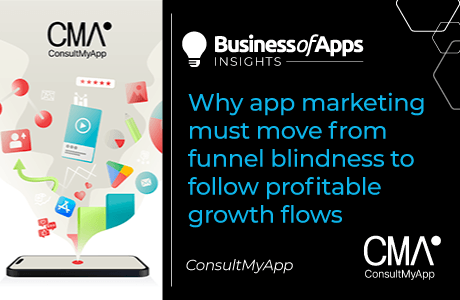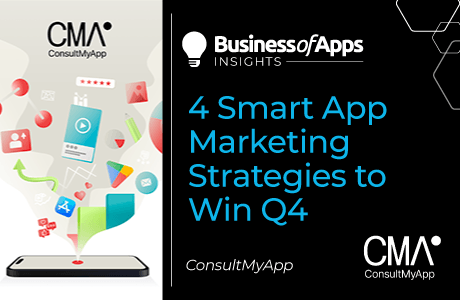In the fast-moving app world, where user acquisition costs spiral upward and retention rates plummet faster than a poorly designed onboarding flow, one discipline has quietly emerged as the secret weapon: creative strategy. The kind that treats every pixel, headline, and color choice as a hypothesis to be tested, the kind where sleek design meets relentless optimization.
Our latest App Talk interview brought us face-to-face with Megan Evans, Creative Director at ConsultMyApp (CMA), who’s built something remarkable: an in-house creative department that treats app design like the specialized science it actually is. What started as informal design consultations has evolved into a full-service creative arm that spans everything from App Store Optimization to retention.
The conversation revealed something fascinating about the current state of app marketing. While everyone talks about product-market fit and user acquisition funnels, the visual and creative strategy that binds it all together often gets treated as an afterthought. Evans argues this is backwards thinking, and her results suggest she’s right.
The specialization problem nobody’s talking about
Designing for apps isn’t just regular design with rounded corners, it’s an entirely different beast. Evans discovered this when she noticed that traditional creative teams, no matter how talented, often missed the nuances of what actually converts on mobile.
“There’s a specialism there,” Evans explains. “You have to really understand what works and what doesn’t.”
This isn’t just creative ego talking. The data backs it up. When CMA started offering app-specific creative services, they found that their understanding of the full user journey gave them an edge that traditional creative agencies couldn’t match.
The numbers tell the story. In-house creative teams at app companies are perpetually overwhelmed, often juggling everything from seasonal campaigns to new feature announcements. Meanwhile, the creative elements that actually drive downloads and engagement — App Store assets, paid social creatives, retention emails — get squeezed into whatever bandwidth remains.
Creative that drives growth: ConsultMyApp’s playbook
Source: App Promotion Summit
The art of creative rebellion
Perhaps the most counterintuitive finding from Evans’ work is this: the creative that performs best is often the one that makes brand managers slightly uncomfortable. In their case study with Simba Sleep, the winning creative for a TikTok campaign was decidedly not the polished, on-brand content that looked best in presentation decks.
“Sometimes it’s the one you don’t want that wins, which is difficult for brands to understand,” Evans notes. “They’ll say, ‘Oh, that’s not really the best-looking one, it doesn’t fit our brand language.’ And I will respond, ‘Yeah, but it’s the winner.'”
This phenomenon reveals something profound about app marketing. While traditional brand marketing might prioritize aesthetic consistency, app creatives need to prioritize conversion psychology. The creative that stops thumbs mid-scroll isn’t always the one that looks good and appeals to the guardians of brand guidelines.
The testing philosophy that actually works
Evans’ approach to creative testing follows a principle that sounds simple but proves difficult to execute: change one thing at a time, but change it fast. This runs counter to the common practice of either testing too many variables simultaneously (making it impossible to isolate what works) or testing too slowly (missing market opportunities).
“Don’t change too much at once,” she advises. “Otherwise you’re never going to understand exactly what it is that’s moving the needle and converting for you.”
This incremental approach has practical implications:
- Test copy separately from visuals to understand which element drives performance
- Isolate color changes from layout modifications
- Balance major overhauls with continuous optimization
Creative testing isn’t just A/B testing with pretty pictures, it’s a systematic approach to understanding user psychology at scale.
When AI Becomes your creative co-pilot
While much of the creative industry wrings its hands about AI displacement, Evans and her team have embraced it as what she calls a “superpower.” But their approach is notably pragmatic rather than revolutionary.
“Every single one in my creative team uses it and loves it,” she explains. “It just makes us more resourceful. Instead of spending time on doing things that can be automated through AI, we’re then now focusing on the parts of it that we love which need the brain, the human brain.”
This isn’t about AI replacing creatives. Rater, it’s about AI handling the tedious parts so humans can focus on strategy, concept development, and the nuanced understanding of user behavior that still requires human insight.
The practical applications they’ve found include:
- Asset generation for rapid prototyping
- Copy variations for testing multiple messages
- Trend analysis across competitive landscapes
- Template creation for systematic testing
Evans emphasizes the importance of learning proper prompting techniques, treating AI proficiency as a basic skill rather than optional knowledge.
The integration imperative
Perhaps the most strategic insight from Evans’ approach is how creative strategy integrates across the entire app lifecycle. Rather than treating App Store Optimization, paid acquisition, and retention as separate disciplines requiring different creative approaches, her team maintains consistency while optimizing for each channel’s specific requirements.
This integration manifests in several ways:
- Consistent messaging that adapts to different platforms and user journey stages
- Visual coherence that maintains brand recognition across touchpoints
- Cross-channel optimization that considers the cumulative effect of creative decisions
The practical result is what Evans describes as a “sustainable growth package”, aka a creative strategy that compounds rather than conflicts across different marketing functions.
What this means for аpps
The insights from Evans’ work translate into several actionable strategies for app companies:
Audit your creative approach: Are you treating app creatives as a specialized discipline, or just regular marketing with app-specific assets? The difference matters more than you might think.
Embrace the ugly winner: If your best-performing creative doesn’t match your aesthetic preferences, the problem might be your preferences, not your creative.
Invest in systematic testing: Creative optimization is an ongoing process that requires dedicated resources and systematic methodology.
Integrate across the journey: Your App Store creatives, paid campaign assets, and retention emails should work together, not independently.
Learn to love AI: Creative teams adopting AI aren’t replacing human creativity, they’re amplifying it.
In an app ecosystem where user attention is increasingly fragmented and expensive to capture, the details matter more than ever. The difference between a good creative and a great creative isn’t just aesthetic — it’s the difference between sustainable growth and expensive customer acquisition.
Recorded at App Promotion Summit London 2025, this interview is part of our ongoing App Talk series, where we dive deep into the strategies behind today’s most successful apps. Explore all our App Talk interviews here.












